Simplified Heraldry
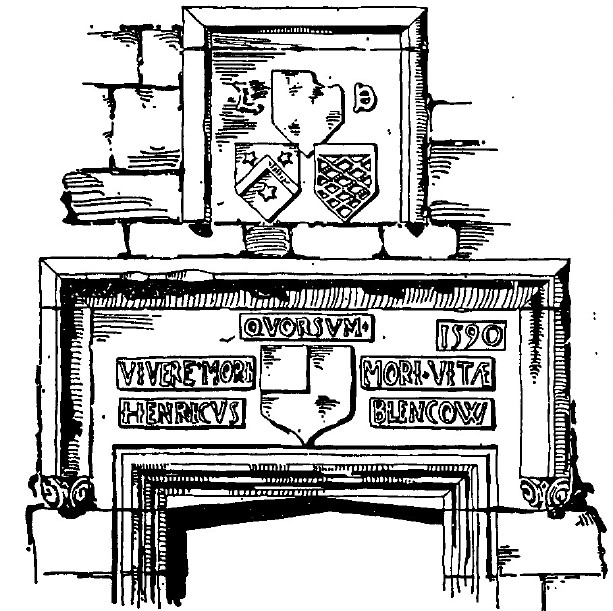
When you approach Blencow Hall you will notice in 1590 Sir Henry Blencow had four stone shields carved above the entrance doorway. Two of these were arms of families into which the Blencowes had married, the other two were the original Blencow arms and the arms granted to Adam by Greystoke.
In 1357, Baron of Greystoke granted to Adam de Blencow his arms; to have and to hold to the said Adam and his heirs for ever; etc.
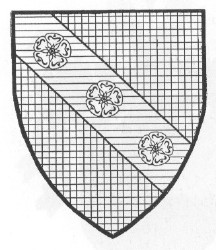
The coat of arms was made up as follows. The shield was black with a bend that had alternate bands of silver and blue on which were imposed three large red chaplets (sprays of leaves and flowers twined into a circle) which were symbols taken from William de Greystoke's arms.
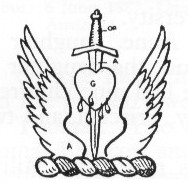
The crest of the Blencowe family is a pale silver sword plunged into a red heart between two expanded silver wings and is common to both the Cumberland and Northamptonshire branches of the family. A legend in the family refers this curious crest to the circumstance that in the Border wars, a Blencowe, whose crest was a sword, having slain a Douglas (no small honour in those days), was permitted to unite it in the present form with the bleeding heart of the Douglas. There is a heart on the shield of the Douglas coat of arms.
When armour was worn, the arms and crest were needed to identify friend, from enemies.
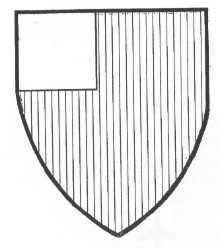
John de Blencowe, (recorded in the Visitations as Member of Parliament representing Carlisle in 1385), also received a grant of arms before 1377. These arms were described as a red shield with the top left-hand quarter in silver. The crest was the same as Adam's.
The top shield above the doorway has been damaged as during the early C17th when the Herald, Sir William Dugdall, made a Visitation; he refused to recognise the Blencowe entitlement to bear the Greystoke arms; he ordered them defaced immediately because they had not been awarded by the king It is significant that the original arms of John Blencow were permitted to remain, recognising Sir Henry's lineal descent from the original armiger.
At a later date the family incorporated the Greystoke device into a shield as an 'augmentation' to its ancient arms.
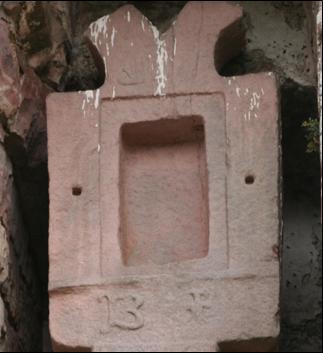
My point in all of this is: I wonder if a shield was attached to the box part of the burial marker and it too was defaced due to the visit of Sir William Dugdall.
We know that whatever was there was gone before the painting was done in 1710.
Anne